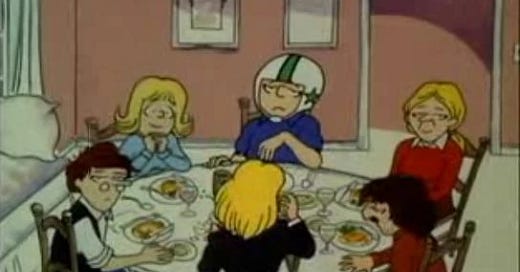Last time I wrote about Amazon’s latest venture in the e-publishing world, Kindle Vella, a new pay-as-you-go platform for serialized stories. Details are scarce, but between Amazon’s press releases, their online help, and reading the tea leaves, a picture emerges of how Amazon plans to enter the burgeoning world of digital serializations.
Although Amazon hasn’t released much new information on Kindle Vella since then, I’ve put together a few more thoughts on the platform, and what it means for writers considering the plunge into serialized fiction.
Episodes vs. chapters
In my last post, I diluted the semantic differences between “chapter” and “episode,” Amazon’s term for serialized installments. By using the term episode, I noted, “Amazon is encouraging writers to think less like novelists and more like television writers.” I should have followed that thought through to its conclusion.
Consider Radish, the serialized fiction publisher most observers think Amazon is trying to catch up with. Last year Radish secured US$63 million in equity funding to produce “hyper-serialized fiction that updates several times per day.” As of last August, they had produced over 6,500 episodes across 30 original series. Certainly those numbers have grown since then.
Radish has hired seasoned TV soap-opera writers to churn out their “Radish Original” series. They meet in writers’ rooms, collectively plan the series trajectory, and dole out episode assignments around the table. Radish encourages writers it works with (but has not hired) to do similar.
My guess is that many writers eyeing Kindle Vella will take a novel they haven’t yet published (or are working on) and turn each chapter into a Vella episode. (Many of the questions on the Kindle Vella community board are pondering this very approach.)
That’s a bad idea. A novel is not merely an episodic story packaged together into one book, just as a novel is not merely a long short story.
Successful episodic storytelling has
a panoply of well-defined characters,
simultaneous plot situations which lead to combinations of those characters mixing and interacting,
all while juggling several story arcs at once.
And, yes, each episode ends on a cliffhanger, to keep the reader reading.
A lot of novels simply do not work this way. Often a single character drives the novel’s narration. The secondary characters, while colorful, are not nearly as strongly defined. The spotlight rarely, if ever, holds steady on them. A novel usually follows a single story arc, or maybe two or three, rather than interweaving several together.
Some commenters on this subject point to Charles Dickens as evidence that Kindle Vella could support a novel broken up by chapters. I think Dickens is, at best, an outlier here. (Does it need to be said that the reading habits of 1840s England is radically different than today’s?) Those looking for novelistic approaches are better served studying Armistead Maupin, but study closely: Tales of the City revolves around many characters intersecting in various ways, each traveling across their own story arcs. It’s not merely a novel created by cobbling together the weekly newspaper columns it originated from.
Better yet, read at least one serialized story on Radish, Wattpad, or another service specializing in the form. This will give an idea of what readers are expecting.
The other reason breaking up a novel isn’t such a great idea for Kindle Vella? Because novels end. Successful episodic stories may never end.
General Hospital is the longest-running soap-opera on American television, broadcast since 1963. Britain’s soap Coronation Street has been on their air since 1960. These are not televised novels where each chapter happens to be an episode. These are long-running stories that simply do not end.
Episodic storytelling isn’t limited to television. The newspaper comic strip Doonesbury may not feel like a soap-opera, but it hews to similar conventions: A cosmos of colorful, well-defined characters thrown together in various plot situations (however contrived) with multiple story arcs running at once. The Doonesbury universe is so grand and intricate, you can purchase a database of every strip printed searchable by characters, events, settings, and so on. Although creator Garry Trudeau trimmed back his daily output in 2014, the ongoing stories of his counterculture pantheon continues into its fiftieth year.
Finally, there’s the matter of cadence. Radish’s “hyper-serialized fiction” series release multiple new episodes a day. Several commenters on the Kindle Vella community board have warned against releasing episodes at anything less than twice a week, and that writers should stick to a regular schedule or risk losing readership.
A successful Kindle Vella series may have hundreds of short episodes, rather than the novel’s usual 20 to 40 chapters, each between two and four thousand words. The numbers mentioned earlier about Radish (“6,500 episodes across 30 original series”) suggests an average of 217 episodes per series—and some of those series may still be ongoing. It’s more like writing a daily diary than planning and executing a full-length novel.
For any writer thinking of dipping their toe in the Kindle Vella waters, I would ask: Will you write chapters or episodes? Are you already planning the end of your story, or could it go on forever? And, how often do you plan on publishing each episode?
The Bridge Daughter Cycle is a Kindle box set of the first three books of my speculative-fiction series.
The series starts with Bridge Daughter, an alternate world of girls born pregnant who, at age thirteen, give birth to the real child and die. It’s followed by Hagar’s Mother and Stranger Son. All three books follow the generations of a family struggling to comprehend and live with the biological fate this alternate world demands.
The Bridge Daughter Cycle is available now. All three books are available separately in Kindle and paperback.




